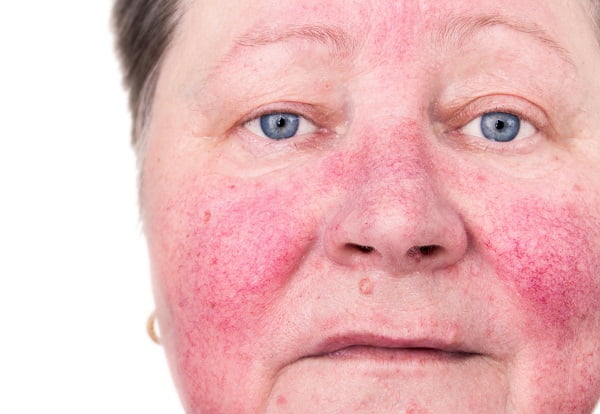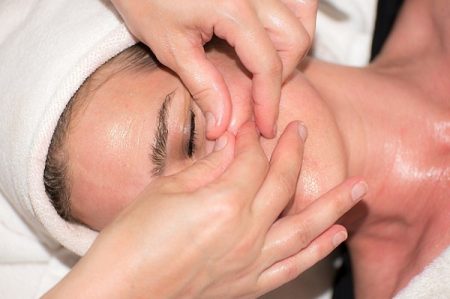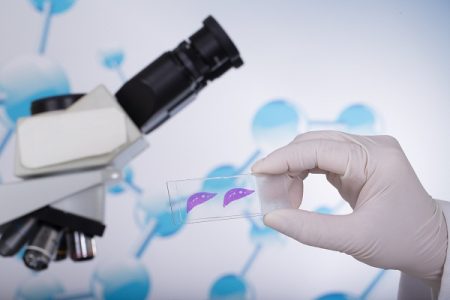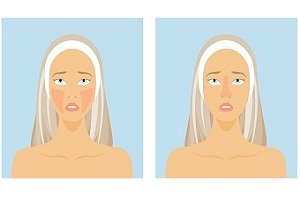
Rosacea Symptoms – What does Rosacea look like?
Rosacea is a skin condition that causes more than a red face. There are several signs and symptoms of rosacea as discussed here, although not everyone experiences all of them.
Flushing
Flushing occurs when your skin becomes red for a short period. It generally affects your face, but it can spread to other portions such as your neck and chest.
Flushing is often caused by a trigger, such as sun exposure, certain foods or drinks or an activity such as an exercise. Read about various causes of rosacea.
Facial redness
Facial redness such as a patch of sunburn that persists and doesn’t go away easily occurs in rosacea.
The redness affects cheeks, nose and chin, but it may spread to other areas, such as your forehead, neck and chest.
Bumps and Pimples
Small red bumps or pus-filled pimples often develop in rosacea. These bumps sometimes resemble acne. Sometimes, they cause burning or stinging.
The skin is not greasy in rosacea, but remains dry and peeling. Rosacea spots don’t cause any scarring on the skin.
Visible Blood Vessels
In some people with rosacea, small blood vessels become visible on the skin. This is called telangiectasia.
Thickened skin
If you develop complicated rosacea, your skin can thicken and form excess tissue, mainly around your nose. This causes the nose to assume a large appearance called rhinophyma.
Rhinophyma is an uncommon and severe symptom of rosacea. It does not develop quickly instead takes several years to develop. It affects only men almost exclusively.
Other signs and symptoms of rosacea
- Skin may be very sensitive
- Raised patches of skin called plaques may form without changes in the surrounding skin
- Dry appearance – The central facial skin may become rough, and appear very dry
- Rosacea signs may develop on areas other than the face. Most commonly, it affects the neck, chest, scalp or ears, in addition to the face.
- Sensitive blood vessels: Blood vessels dilate very easily to touch or with some other physical stimuli, such as sunlight. It is caused by sensitive blood vessels.
How can rosacea affect your eyes (Ocular rosacea)?
Some people may get rosacea in their eyes. The eyes may have any of the following symptoms:
- Eyes remain very dry
- Itching
- Watery eyes
- Eyes are generally sensitive to light
- Broken blood vessels on your eyelid can be seen
- Cyst develop on the eyelids
- Eyes burn or sting
- Vision is affected
- Often feels like sand in the eyes
- Blurred vision
People experience a burning, gritty sensation in their eyes, making them bloodshot. The inside of the eyelid may become inflamed and scaly, which can sometimes cause conjunctivitis.
Some people are not able to tolerate contact lenses.
How does rosacea affect quality of life?
Rosacea can affect more than your skin and eyes. Rosacea is a chronic skin disease, and it can significantly reduce the quality of life of a person. People may face problems at work, in their marriage, relationships, and in daily activities.
Living with rosacea can affect in many ways such as the following:
- It causes a feeling of frustration and embarrassment
- Anxiety and depression are common in people living with rosacea
- People generally worry that their condition will get worse or will cause scars on their faces
- The disease affects people’s interactions at work with others
- The confidence level and self-esteem of people living with rosacea is lowered







1 Comment
Your article helped me a lot, is there any more related content? Thanks!